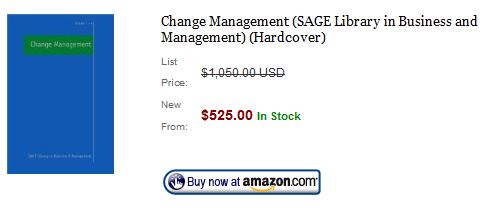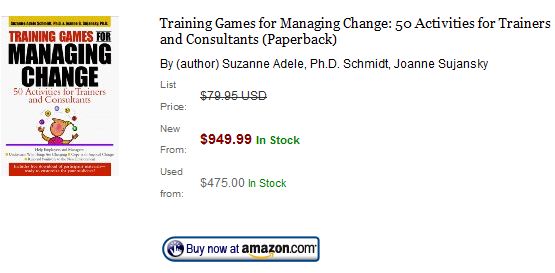My son turned 2 years old in June 2010. By most standards, barely a 2 year old isn’t ready to be potty trained. I beg to differ.
The other day, after breakfast, I placed him on the toilet, hoping so badly he would go poopy. After 30 minutes or so, he finally went poopy and we had a serious party – screaming, clapping, and smarties all around. I thought for sure he was potty trained.
If They’re Not Ready, then They’re Not Ready
I’m really tired of the diaper stage of parenthood. So in my anxiousness to get out of this stage, I thought I could hurry my son along from diapers into underwear.
I was wrong.
And, this is despite me having 9 children and having potty trained 6 of them – I should know better.
The Poopy Diaries: The Next Day
The day after he went poopy, I tried it again, but to no avail. I realized, maybe he’s just not ready. And, forcing a 2 year old to go poop is a losing battle – if the kid doesn’t have to go poop, he doesn’t have to go poop. And, it’s okay. He’ll learn in his own due time – with my loving help. But forcing will only delay his progress.
Organizational Readiness and Poo
Analogous to me forcing my son to be potty trained when he’s not ready, most organizational change consultants, lean consultants, six sigma consultants, turnaround consultants, management consultants, etc., attempt to force their client companies toward change, when maybe the client company is not ready.
if the kid doesn’t have to go poop, he doesn’t have to go poop.
True, Deming did say that change isn’t necessary and neither is survival. Despite that, forcing a company toward change isn’t very successful in the long run. If they’re not ready, then they’re not ready. Let the fittest organizations survive and the weak organizations fall by the wayside.
Some Plant, Some Water, Some Harvest
In many cases, those that plant the seeds, water the seeds, and harvest the seeds are different people. The same is true for companies – some are ready for seeds to be planted, some where those seeds are watered and cultivated, and some are actually ready for change – the harvest step.
Given this natural law, one can’t force a seed to sprout and grow. It takes time.
What is Organizational Readiness?
Here are a few, related definitions:
- Organizational Readiness is an awareness of the current state of the organization; that awareness leads to urgency and desire and willingness to change.
- Organizational Readiness is the ability and capability for an organization to shift (or pivot) from the current way of operating to a different way of operating.
- Capability, in the context of Organizational Readiness, means assessing the skills necessary to make the desired changes successful.
- Willingness, in the context of Organizational Change Management, means that the leadership and employees want to be part of the change.
- Organizational Readiness also means identifying any barriers to change, prioritize which barriers are higher in importance than others, and having a solid plan to address the barriers to change.
Given this natural law, one can’t force a seed to sprout and grow. It takes time.
Assessing Organizational Readiness
Step One: Identify Desired Change and Commit a Champion
- Write it down. This might mean stating the current conditions of the organization and then clearly articulating a future vision after the change has occurred. Leadership and key stakeholders should be involved.
- A must-have is a champion with enough authority to make things happen. This is a critical step and the future of your change initiative rests with this one.
Step Two: Determine Current State versus Future State
- What is the current state of the organization – in every facet, but prioritized from people, finances, customers on down.
- What is the gap between where the organization wants to arrive at versus where it is currently?
- Is the future vision aligned to the current values and culture? If not, then that represents a gap that should be addressed.
Step Three: Determine Resources, Skills, and Talent Gaps
- How much funding is needed to achieve the change? Is funding available for the initial change?
- What skills and talent are required to achieve the change? Who satisfies that criteria today? Can we upskill and retrain our people? If so, what is the timeline?
- What other initiatives might be competing with the desired change? Can both initiatives co-exist or align?
Step Four: Identify Stakeholders and Stratify them in a Barrier Chart
- This is also known as Force Field Analysis or a simple Stakeholder Chart.

- Once the chart above is completed, then it makes sense to as the following:
- For a given influential stakeholder that is a major barrier to the success of the initiative, what is the root cause of their resistance and what can be done to help them progress from Major Barrier to Full Support?
- For a given non-influential stakeholder that is a major barrier, we need to choose whether we should spend time convincing that person to support?
- Doing this step is also critical because, at the end of the day, it will be people that can either make or break the change initiative. So, spend appropriate time here and, remember, that most people don’t change for objective reasons, but they are affected via emotion and for subjective reasons.
For More Context
Below are a few videos of Ken Blanchard, a noted change management thought leader, speaking about large-scale change and how to lead a change management effort.











No responses / comments so far.